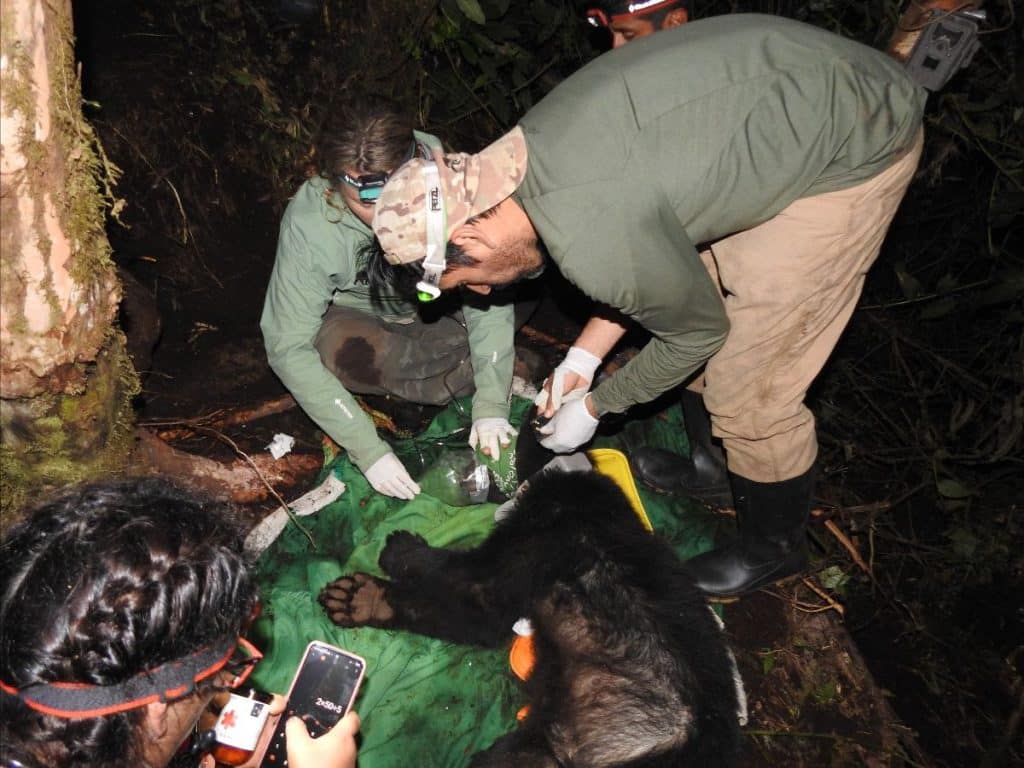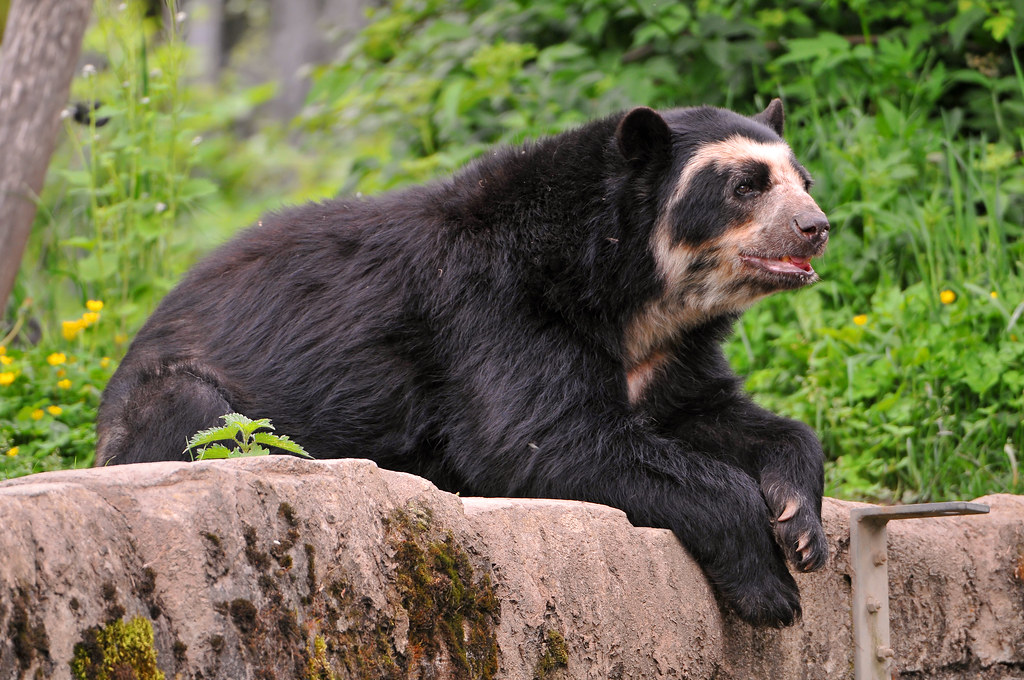Groundbreaking Advancement in Spectacled Bear Research
In the post First Spectacled Bears Fitted with GPS Collars at Machu Picchu – Wildlife Conservation Network, we learn about exciting new steps to protect spectacled bears. Tracking these bears with GPS collars is a big milestone. It’s not just about keeping an eye on their movements; it’s about understanding how they live and thrive in their natural habitat.
 The SBC team collaring a female spectacled bear near Machu Picchu.
The SBC team collaring a female spectacled bear near Machu Picchu.
This development, tracked through mountains and forests, shows where bears feed and breed. Knowing these areas means better protection. SBC isn’t working alone on this; they have teamed up with Peru’s National Protected Areas Authority, or SERNANP.
The plan is to fit at least 10 spectacled bears with collars. This will provide a fuller picture of their range. It’s like piecing together a giant puzzle of their lives.
“In 2008, SBC were the first conservationists to ever fit a spectacled bear with a GPS collar, and now they are the first to collar Machu Picchu’s bears.”
This isn’t just about technological advancements. It shows a long-term commitment to saving these amazing animals. The collars are more than just gadgets; they’re symbols of progress in wildlife research and conservation.
For further details, don’t miss out on reading First Spectacled Bears Fitted with GPS Collars at Machu Picchu – Wildlife Conservation Network!
Collaborative Efforts to Safeguard Biodiversity
This project isn’t an isolated effort; it’s a collaboration involving many partners. SBC is working closely with SERNANP, Peru’s National Protected Areas Authority. Together, they’re combining resources and knowledge to protect spectacled bears and other wildlife in Machu Picchu.
The GPS collars are a big part of this. By tracking bear movements, SBC can find important feeding and breeding areas. Protecting these areas means not just saving the spectacled bears but also preserving the whole ecosystem. It’s like a domino effect: saving one species helps save many others too.
Key Facts About the Collaboration:
| Partnering Organizations | SBC, SERNANP |
| Project Area | Machu Picchu Historic Sanctuary |
| Goal | Collar 10 spectacled bears |
| Purpose | Track movements, identify key areas, protect habitat |
Besides the collars, SBC has installed over 200 camera traps around Machu Picchu. These cameras capture footage of the wildlife, providing more data. Combining data from collars and cameras gives SBC a better picture of the bears’ lives.
It’s amazing to think how much teamwork goes into this effort. It’s not just scientists in labs; it’s people on the ground, working daily to make a difference. Everyone from government officials to local communities plays a part.
This collaboration highlights the importance of coming together to protect our planet. It’s reassuring to know that so many people care about these bears and their home.
Future Conservation Goals and Initiatives
The future of spectacled bear conservation is looking bright with various exciting goals and initiatives lined up. SBC (Spectacled Bear Conservation) has a clear vision for the coming years, focusing on expanding their research and protection programs.
One major goal is to secure the area around Machu Picchu as a UNESCO Biosphere Reserve. This would protect 1.5 million acres of land in the Andes Mountains, benefiting not only spectacled bears but many other species. Achieving this status means stricter regulations and greater efforts to conserve the ecosystem.
Planned Initiatives:
- Expand collaring programs: SBC aims to collar at least 10 spectacled bears, gathering more detailed data on their movements and habits.
- Engage with local communities: Working alongside indigenous communities is crucial. SBC plans to involve local people in conservation efforts, ensuring sustainable practices are maintained.
- Increase research facilities: Setting up more research stations in and around Machu Picchu will help scientists monitor wildlife more effectively.
- Promote ecotourism: By fostering responsible tourism, SBC hopes to raise awareness and funds for conservation, while ensuring minimal impact on the bears’ habitat.
“Involving local communities increases the chances of success in these conservation projects,” says a spokesperson from SBC.
By installing more camera traps and utilizing GPS data, SBC is setting the stage for a well-rounded understanding of the spectacled bear’s ecosystem. They’re creating a blueprint that other conservation projects around the world can follow.
More ideas and related content can be found in their post. You can read more about it here: First Spectacled Bears Fitted with GPS Collars at Machu Picchu.

